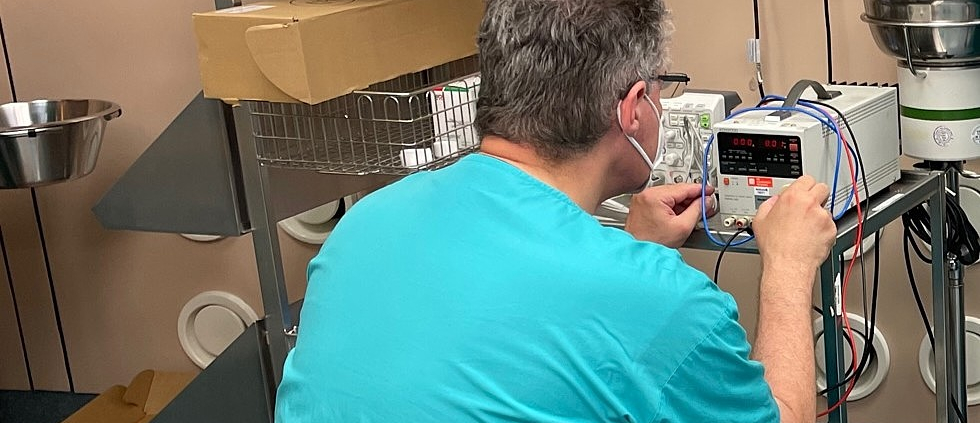A New Type of Pacemaker Can Respond to a Patient’s Breathing and Blood Pressure. Scientists at ICRC Work to Bring It Into Clinical Practice
As part of the international CResPulse consortium, of which scientists from the International Clinical Research Center (ICRC) are an integral part, a new type of intelligent pacemaker is expected to be developed that can instantly respond to the specific characteristics of a patient’s body. The technology aims to contribute to more successful, individually tailored treatment of cardiovascular diseases. Work on the prototype began at ICRC with the onset of summer, and it is estimated that the device could start being used in routine clinical practice within 10 years.
Respiratory sinus arrhythmia (RSA) is a natural phenomenon in which the heart rate changes according to our breathing – it slows down during exhalation and speeds up during inhalation, which eases the heart’s work and, especially at night, allows it to regenerate more effectively.
However, with increasing age, this mechanism can weaken, which is associated with deteriorating heart or metabolic health. Disruption of this connection is common in patients who have had a myocardial infarction, heart failure, diabetes, a stroke, or in patients suffering from Parkinson’s disease.
Professor Alain Nogaret from the University of Bath in the UK has succeeded in developing an innovative hardware generator of central patterns that faithfully simulates natural respiratory sinus arrhythmia. The neural network synchronizes with the phases of the breathing cycle—i.e., the moments of inhalation and exhalation—and adjusts the intervals of cardiac stimulation, allowing it to adapt much more naturally and effectively to the specific characteristics of individual patients’ bodies.
The CResPace project, of which the International Clinical Research Center (ICRC) has been a part since 2016, confirmed that adaptive stimulation improves cardiac output, reduces the risk of arrhythmia, and also supports the regeneration of transverse tubules—a crucial component of cardiomyocytes, or heart muscle cells, which transmit electrical signals from the cell surface to its interior. This allows the heart muscle to recover, with effects observed as early as four weeks after implementation.
This research is now being continued at ICRC. ‘We want to find out how to better read breathing patterns. Mimicking the natural interaction between breathing and the heart could be the key to new, personalized approaches, especially for patients with severe heart failure or serious cardiac rhythm disorders,’ says Martin Pešl, a cardiologist at FNUSA and a scientist at ICRC.
A new intelligent pacemaker for cardiac resynchronization is expected to be developed. As part of the project, experts will create advanced mathematical tools that will allow the implants to also monitor neural activity in real time.
The device is expected to adapt to the physiological signals of a patient’s body, thereby restoring processes that are weakened due to disease. ‘The new type of pacemaker will be able, beat by beat, to adjust the heart rate and the timing of heart chambers according to the patient’s breathing or the levels of oxygen and carbon dioxide in the blood,’ adds Martin Pešl.
The CResPulse consortium brings together multidisciplinary research teams from ICRC, the University of Bath, and the Medizinische Universität Wien. The Brno-based ICRC, a joint workplace of St. Anne’s University Hospital in Brno and the Faculty of Medicine at Masaryk University, is one of only two entities in the Czech Republic to participate in the prestigious project under the EIC Transition call organized by the European Innovation Council. The research could receive up to €2.5 million to transform research results into innovations with potential application in medical practice.


